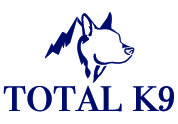
Marker Words
Setting a clear and consistent communication system to let your dog know when they are right vs when they are wrong. Think of marker words as feedback to your dog . The most important aspect of the marker word system is the timing in which you deliver them. You want to capture the exact moment your dog did what you wanted or the moment they started doing the wrong thing by marking that behavior with a consistent word.
Rewards
Incentivising your dog through resources they value.Food
Having your dog work for their food is a great way to build a strong relationship and a positive association with training. By utilizing their meal productively you will become a valuable resource to them.
Play
Figure out what type of play your dog prefers naturally; competitive or cooperative. Do they prefer to tug or chase? Some dogs value toys more than food. Be their play partner and their access to their toy.
Attention
For some dogs who are more social, giving them attention reinforces the behavior at hand. This is especially important during the puppy stage. If your dog values attention, be intentional with when you give it to them.
Motion
Physical movement and spatial pressure are natural forms of communication dogs use with each other. Using gestures is a great way to begin cueing basic commands in a way that makes more sense than verbal communication. Later, you can use these gestures as additional guidance when giving commands during challenging environments. Movement is motivating for dogs. Use contrast in motion to encourage your dog in your direction and to add excitement in your training.
Leash
A leash is a tool every dog owner has, yet not everyone uses in their training. Teaching your dog to be responsive to leash is a great way to follow through with commands through a physical and directional form of communication.

